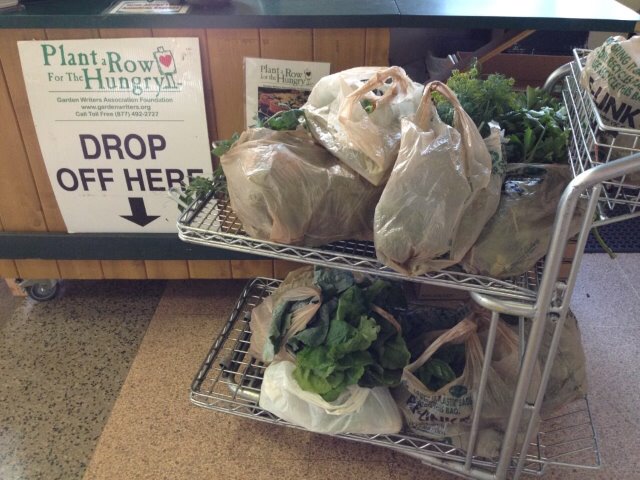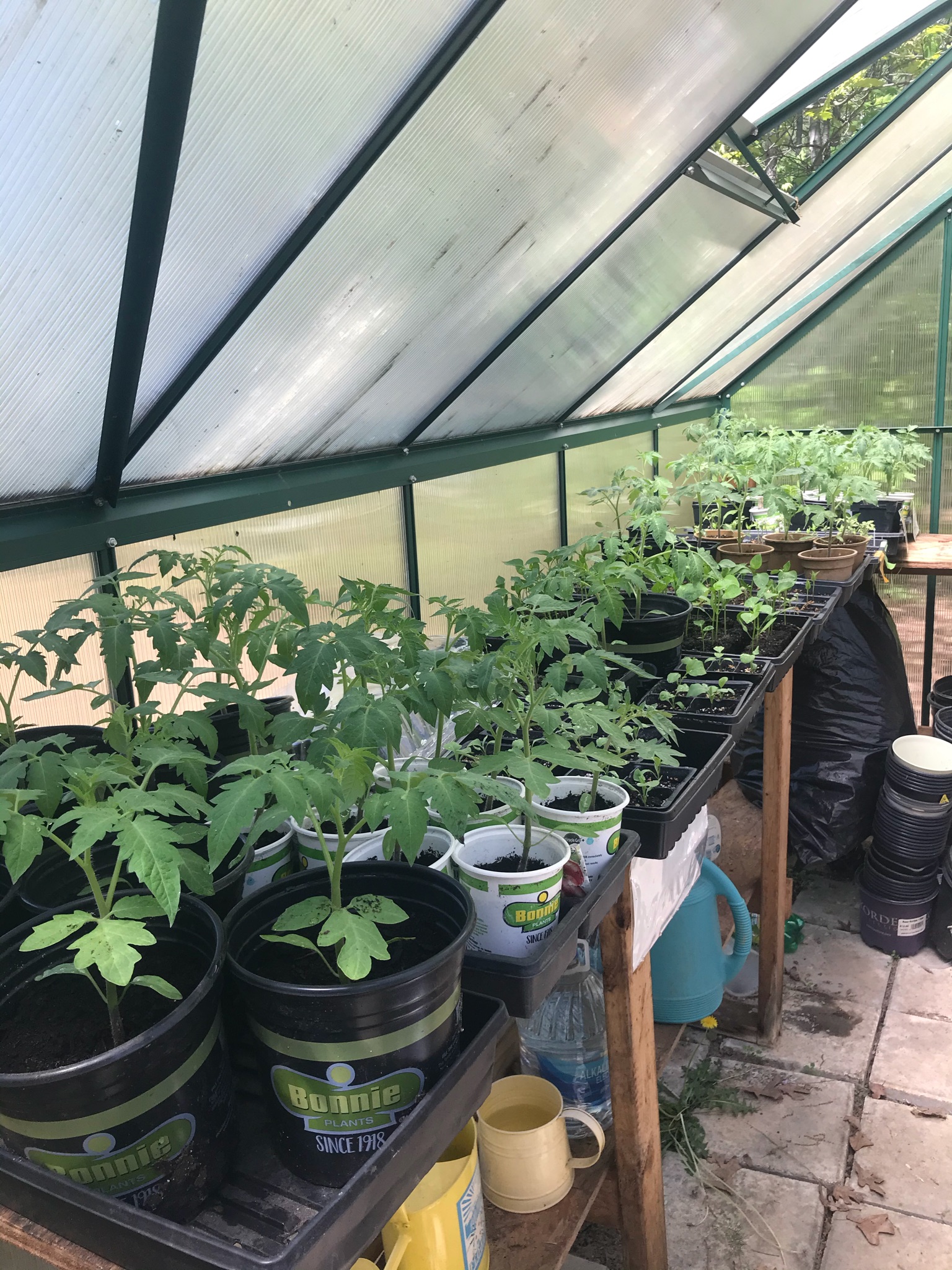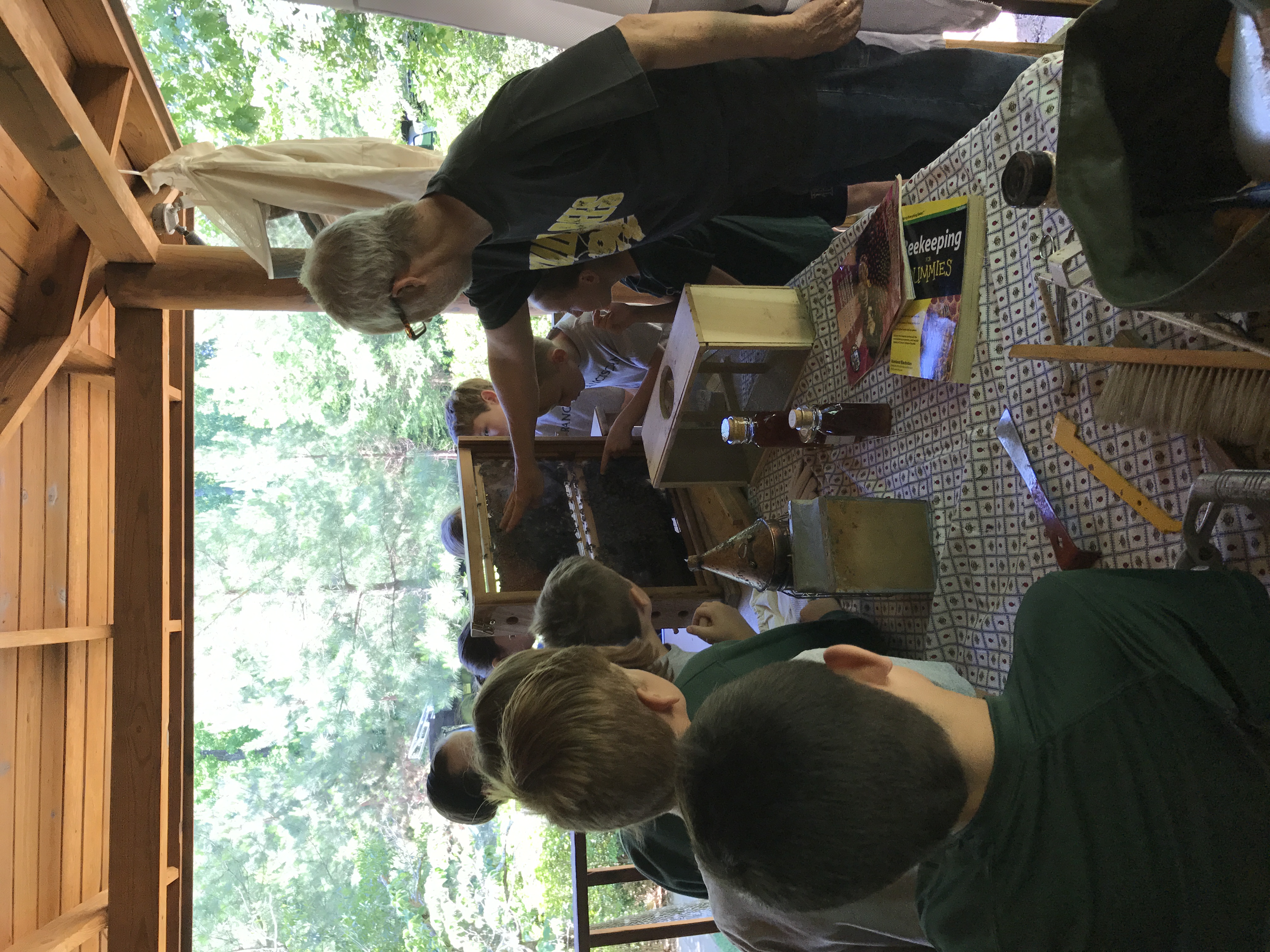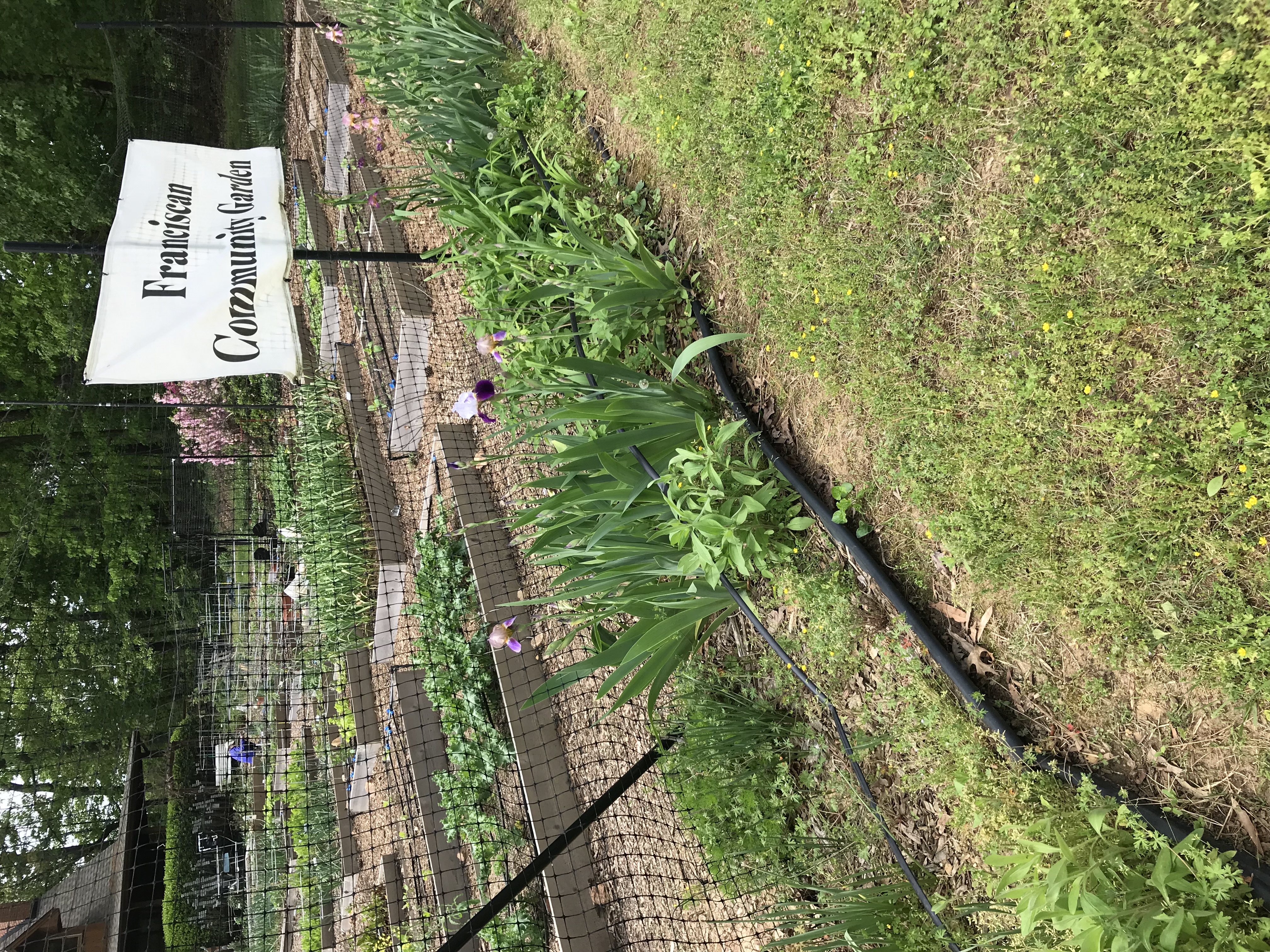Garden Details
Garden Details
Since its inception, the Franciscan Community Garden has been using sustainable garden practices to grow food for food insecure individuals and families. Volunteers work Saturday mornings year round and add Tuesday and Thursday hours during the summer to grow vegetables and herbs using organic methods. Recently a rain/native plant
/pollinator garden was added, and we are in the final stage of adding an ability bed for use by those with mobility issues.
In addition the garden has blueberry bushes and fig trees. Native to the southeast, 6 new blueberry bushes were added this spring. In the last 3 years, our Parish has supported a local Black farmer by encouraging parishioners to subscribe to his CSA through Rafi. Produce not taken by subscribers is included in the weekly Franciscan Community Garden donation to Plant a Row for the Hungry/Interfaith Food Shuttle. Our best yearly donation was over 5,000 pounds.
Because there is a school on the campus, the garden is a place for hands on learning for students from preschool to 8th grade. The students, often joined by their parents, are actively learning about the deep connection between their faith and nature
Garden Practices
Garden Practices
* We use raised beds with drip irrigation to protect the vegetables from excess rain or drought. The beds are made of a trex like material that will not breakdown
* We compost & continually enrich the soil with the compost & decomposed wood chips that also serve as mulch
* The garden is fenced with special consideration to keep critters out
* We rotate crops and do companion planting
* We constantly prune tomato plants to limit disease & extend production
* We monitor for pests and use organic interventions
* We extend the growing season with row covers
We germinate tomatoes, peppers, eggplant, basil
We can grow vegetables throughout the year:
Winter includes onions, garlic, spinach
Spring includes: Swiss chard, beets, carrots, lettuce, cilantro, dill, rosemary
Summer: tomatoes, eggplant, peppers, cucumbers, squash, potatoes, sweet potatoes, okra, bush beans, basil, parsley, sage, oregano
We maintain a large volunteer email list and send out a weekly newsletter with information about starting time, anticipated tasks, garden successes, and learning opportunities. Saturday is our main workday with many regular volunteers, and others who come when they can. Best turnout is in the spring and fall when the weather is cooler. Work is tough during our hot summers, so we start earlier to beat the heat.
The parish encourages volunteers through a Ministry Fair, and staff has a yearly workday with many choosing to help in the garden.
Additional Information
Additional Information
Weeds and invasive plants are a big challenge. They grow in the fences, between the beds, and in the beds. They are impossible to keep up with. We’ve tried many things: solarize, weed whack, wood chips over cardboard. We dream of installing gravel between the beds.
We would like to work with the parish’s facilities manager to install a cistern to capture rain runoff from the log cabin house on the property to supply the drip irrigation. The city will pay 100%. In addition we are working to create a path that would allow delivery of free wood chips to the garden
There are so many it would be hard to recapture them all. That’s why we call the garden a miracle garden! One of our favorite happened during our second year when we were getting ready to install deer fencing. After careful research, we located a company that stepped us through the process, which included pounding about 20 metal post & sleeve systems into the ground. Quite a task for a bunch of do “gooder” retirees! Out of the blue, we got a call from a young guy, who had seen about our harvest donations at the local “Plant a Row for the Hungry” site. He shared he had just helped a friend install a fence around a much larger plot, & thought he could help. In one afternoon he pounded in all 20 posts, and the fence went up the next day!






